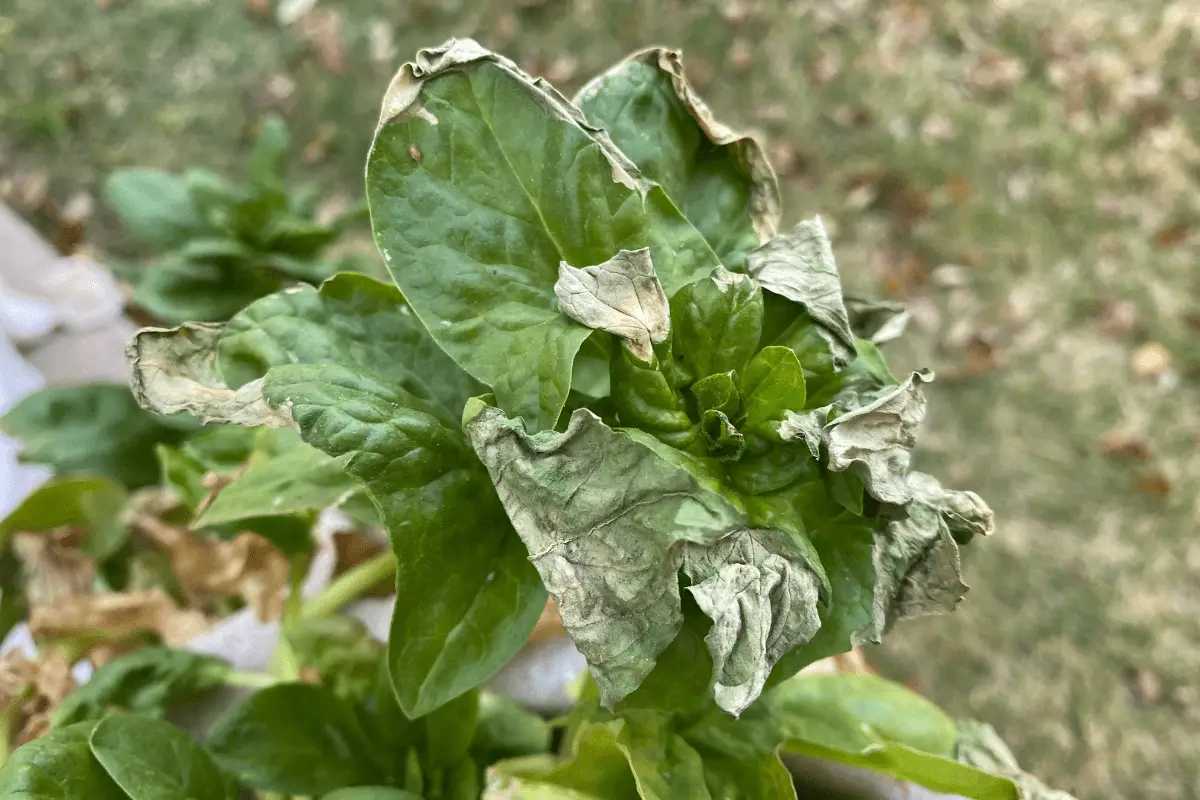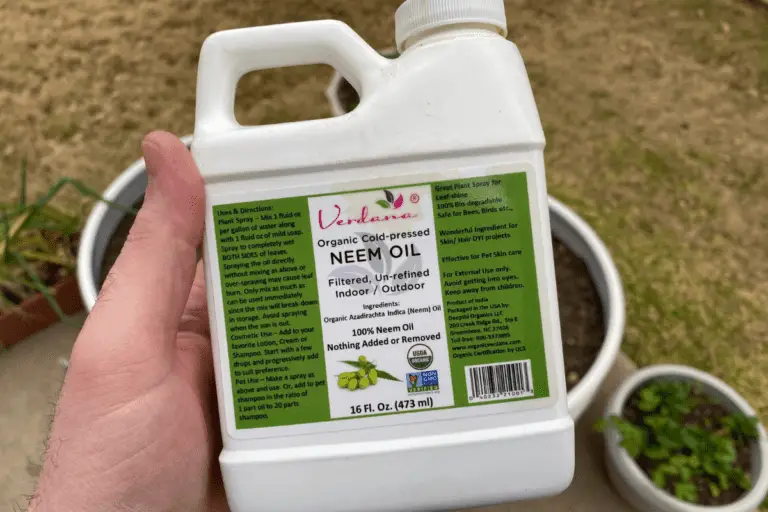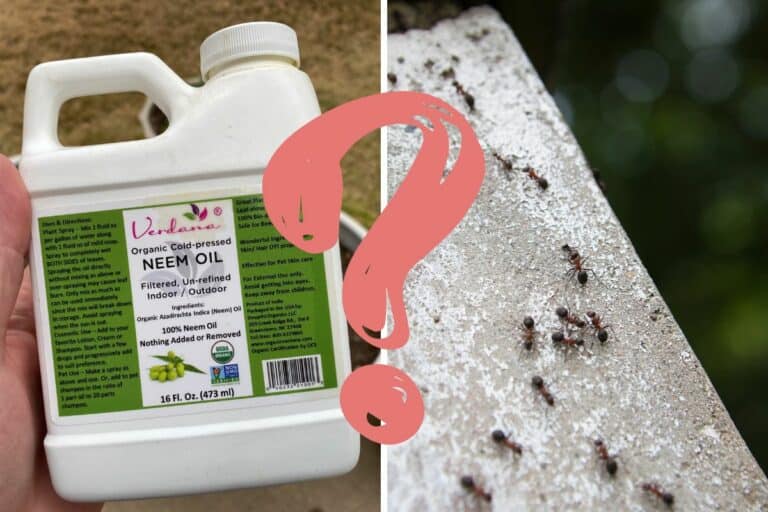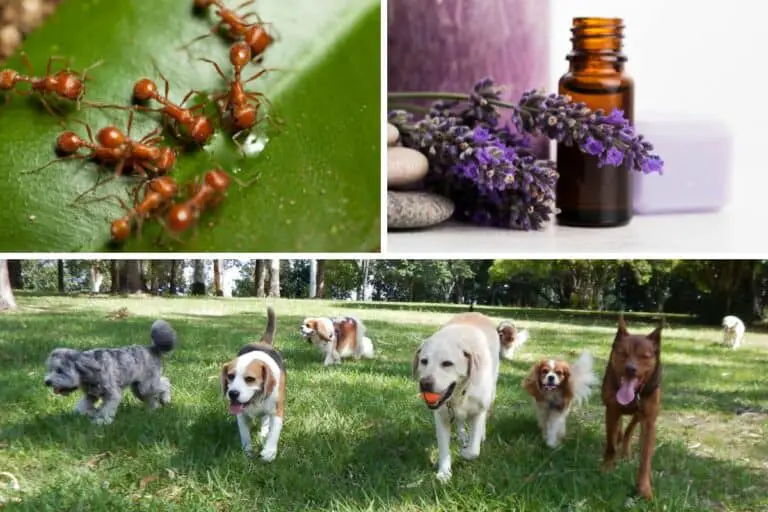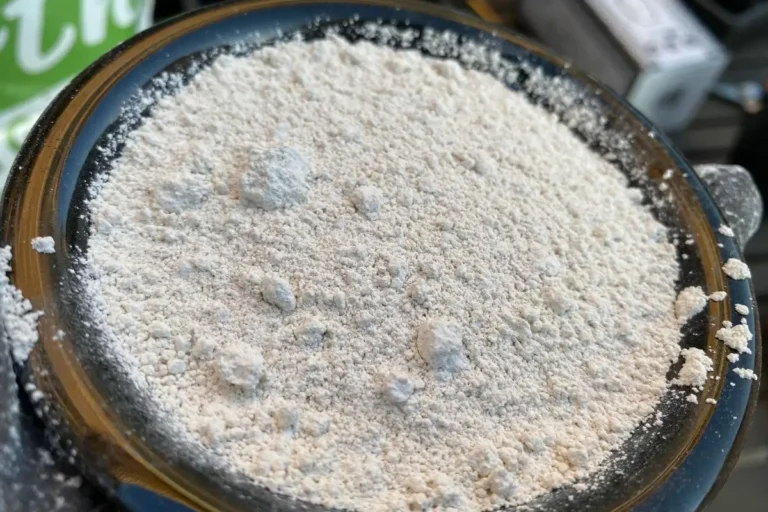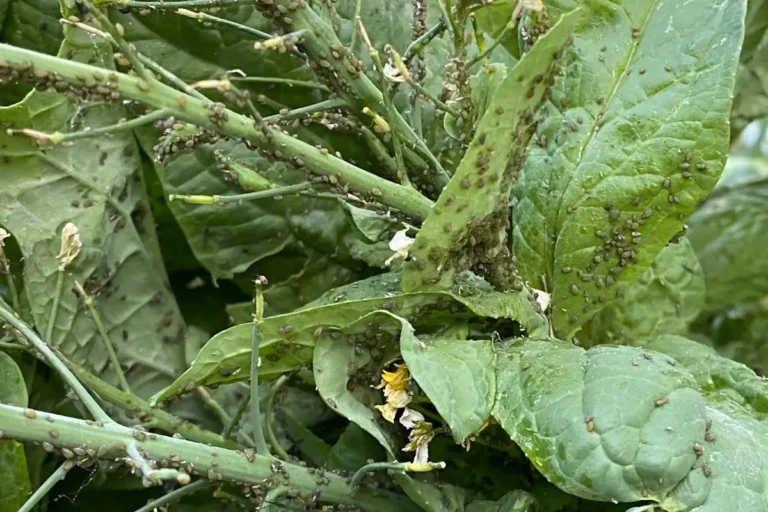How to Wash Neem Oil Off Plants: 3 Steps + Things to Know
Have you ever unintentionally doused your plants in neem oil? Maybe you got carried away and accidentally used your garden sprayer way too much?
Neem oil is an incredible organic insecticide, given the ways that its primary ingredient (a natural chemical compound known as azadirachtin) disrupts insects’ feeding, hormonal, and reproductive patterns.
But it can be easy to get a bit carried away with your garden sprayer, as I did when I was a younger gardener. Have you ever sprayed too much of it on your plants? Or sprayed and then remembered afterward that you had intended to harvest some veggies for an upcoming meal?
Regardless of the reasons, what should you do if you realize that you need to wash the neem oil off your plants and vegetables?
The best way to rinse off neem oil from plants and vegetables is to spray them with a simple soapy water solution, followed by a water rinse. The soapy water will help loosen neem oil particles while the water rinse will ensure that plants are free of both oil and soap.
As I’ve noted in an article on rinsing off neem oil, I think it’s typically unnecessary to do so. In all the years I’ve sprayed neem oil, I’ve only decided to wash it off a handful of times.
But I learned my lesson the hard way. There was one time when I was dealing with a major aphid infestation, and I liberally sprayed my kale with neem oil. Unfortunately, I went a bit overboard to the point where neem oil was dripping from the foliage and pooling in the leaves’ wrinkles and creases.
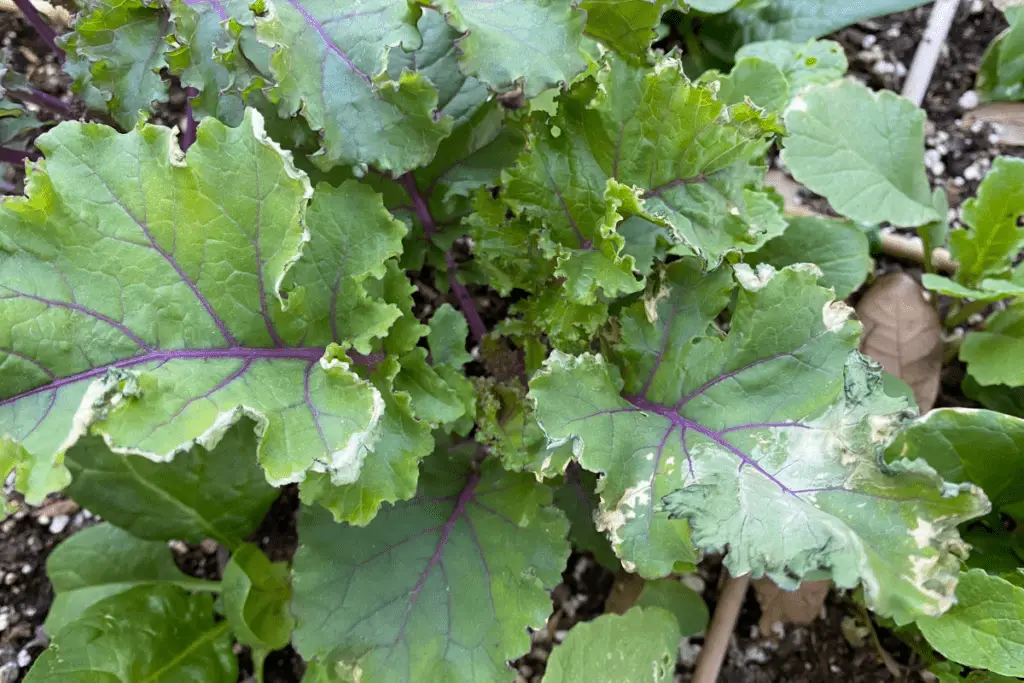
I didn’t think much of it at the time since I had never really had problems in the past. The next day, however, my kale clearly showed signs of neem oil burns.
In order to help you avoid my mistake, let’s take a look at the best ways to wash off neem oil if you ever feel like you need to do so.
How Do You Wash Neem Oil Off Plants? 3 Things to Consider
When you spray your plants with neem oil, you’re supposed to let the neem oil solution dry out, then wait patiently since neem oil typically takes 4-7 days to kill off bugs.
Under normal circumstances, do not attempt to wash off neem oil after spraying your plants since this will erode its effectiveness and shorten its peak performance period. Simply let it be. But if you’re going to wash neem oil off of your plants, do this.
To wash neem oil off plants, spray plants with a soapy water solution (typically 2 tablespoons of liquid soap per gallon of water), then use a garden sprayer or hose to give plants a gentle rinse. The soapy water will loosen neem oil particles, and the water rinse will help dislodge them.
Neem oil repels or kills a wide variety of bugs. When insects munch on or the foliage of neem-sprayed plants, they’ll ingest azadirachtin and begin to experience many negative side effects.
I find that it’s generally difficult but certainly possible to use too much neem oil on your plants, so if you think you’ve done so, follow these 3 quick steps to ensure that your plants don’t suffer from neem oil burns this week.
1. Mix a Mild Soapy Water Solution
Neem oil is an oil, so water alone won’t wash if off, although exposure to the elements means that neem oil will likely degrade completely within a week after you’ve sprayed it on your plants.
If you feel like you’ve oversprayed your plants, fill a 1-gallon or 2-gallon water sprayer with water, then add 2 tablespoons of an organic liquid soap per gallon. I prefer Dr. Bronner’s Peppermint Castile Soap since it’s a natural, versatile product.
Once you’ve mixed soap and water, this will create a sudsy solution that you can spray your plants with.
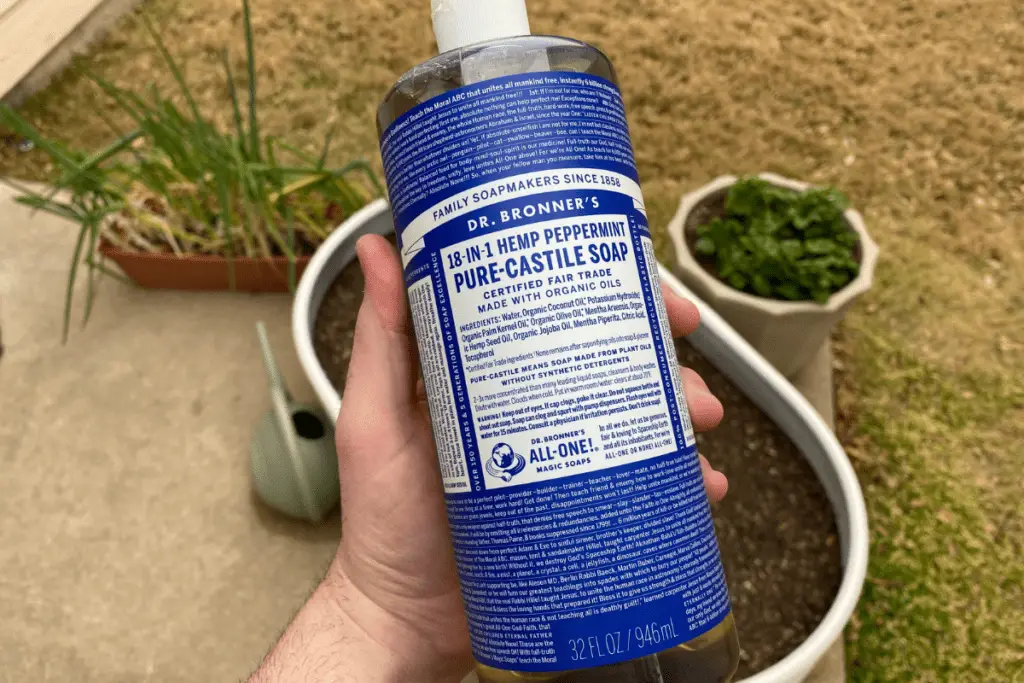
2. Spray Plants with Soapy Water
Spray your plants with this soapy solution. Just be careful not to douse flimsier or more fragile plants since I typically don’t like to put them under too much stress on a single day.
I prefer mist or cone settings for this task since they’re typically gentler on the plants. But if I’m spraying tomatoes, peppers, or eggplants, they’re hardy plants and can handle whatever I spray them with.
If you read more about my neem oil process, you’ll see that I’m pretty thorough when it comes to spraying my plants with neem oil. I’ve even outlined exactly how I do so with tomatoes in articles that explain my 10 reasons for using neem on tomato plants and my step-by-step guide for effectively using neem on tomatoes.
If you’ve sprayed your plants as thoroughly as I do, you’ll need to be just as thorough when it comes to spraying them with a soapy water solution.
3. Rinse Plants with Water
Now that you’ve washed your plants with a soapy water solution, you’ll need to finish off the process by giving them a light rinse with water, using either a garden sprayer or a hose set to a mist of fan setting.
Once you’ve sprayed your plants with both soapy water and a water rinse, you’ll have removed much (if not all) of the excess neem oil.
Just remember: This is not something you need to do on a regular basis. Neem oil needs to dry on your plants so that it’ll be ingested by foliage-munching or plant piercing bugs, such as aphids, caterpillars, spider mites, and many others.
If you’re concerned about spraying too much neem oil on your plants, pick 3 of the same type of plant and test out different application levels. Spray them with light, medium, and heavy applications, then watch to see what happens in the next day or two. If your plants still look fine a few days from now, you’ll know that that particular plant can handle heavier neem oil sprays.
Does Rain Wash Away Neem Oil?
What I love most about neem oil is the fact that it’s safe to use in the garden, unlike harsher chemical insecticides. But what happens when it rains? Does all that neem oil get washed off of plants?
Generally speaking, rain alone won’t wash off neem oil once it’s had time to dry since the oily residue will adhere to the plant’s foliage. However, neem oil begins breaking down when exposed to sunlight and water, so rainfall will likely contribute to this process.
In articles that explore killing spider mites with neem oil and looking at reasons why your neem oil might not be working, I’ve suggested that neem oil works best when it’s applied at least once every 7 days or even, when treating extreme infestations, once every 4 days.
But these suggestions don’t account for rainfall, especially heavy rainfall. Although rain won’t typically wash neem oil off plants–just like water from your tap won’t clean an oily pan–it’ll degrade neem oil, so you’ll likely need to reapply a day or two sooner than you would have otherwise done.
What Is the Best Time to Spray Neem Oil on Plants?
I know that many bloggers recommend spraying neem oil either late in the day or early in the morning, but I don’t like such suggestions. Depending on where you live–and what time of year you’re dealing with invasive bugs–if you spray neem oil on the morning of a hot summer day, you’re likely going to burn your plants.
Neem oil works best when sprayed when in the late afternoon or early evening, once the sun starts to set but while there’s still full visibility. Spraying later in the day allows neem oil to fully dry before the sun rises the following day and the weather warms up.
But don’t wait too late to do your spraying. You need to have enough visibility so see what you’re doing–and to inspect your plants beforehand so that you’re not spraying ladybugs or other beneficial insects.

There have been a few occasions when I forgot to look at my plants, and I sprayed a plant with neem oil that had ladybugs on it. I noticed afterward that the ladybugs had squatted down, so I watched for a few minutes to see if I had killed them. Thankfully, they started crawling again shortly thereafter, but I learned this lesson: Check your plants before you spray.
Can You Water Plants After Applying Neem Oil?
You might be wondering if you can spray your plants with neem oil and also water them on the same day, so here’s the simple answer.
Plants can be watered immediately after spraying them with neem oil, but care should be taken to ensure that only the base of the plants gets watered. This is important because water can contribute to the breakdown of azadirachtin, neem oil’s most important insecticidal element.
If you’re planning to water your plants and spray them with neem oil on the same day, I’d go ahead and do the watering first. That way, you don’t have to worry about getting water on your plants while watering them.
If you’d like to learn more about the proper use of neem oil, check out my 10-step process for making an incredibly effective neem oil spray.
Want to Learn More?
If you’d like to continuing reading, I recommend these articles since they provide important insights about using neem oil in your garden:
